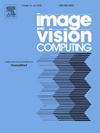Feature extraction and fusion algorithm for infrared visible light images based on residual and generative adversarial network
IF 4.2
3区 计算机科学
Q2 COMPUTER SCIENCE, ARTIFICIAL INTELLIGENCE
引用次数: 0
Abstract
With the application and popularization of depth cameras, image fusion techniques based on infrared and visible light are increasingly used in various fields. Object detection and robot navigation impose more stringent requirements on the texture details and image quality of fused images. Existing residual network, attention mechanisms, and generative adversarial network are ineffective in dealing with the image fusion problem because of insufficient detail feature extraction and non-conformity to the human visual perception system during the fusion of infrared and visible light images. Our newly developed RGFusion network relies on a two-channel attentional mechanism, a residual network, and a generative adversarial network that introduces two new components: a high-precision image feature extractor and an efficient multi-stage training strategy. The network is preprocessed by a high-dimensional mapping and the complex feature extractor is processed through a sophisticated two-stage image fusion process to obtain feature structures with multiple features, resulting in high-quality fused images rich in detailed features. Extensive experiments on public datasets validate this fusion approach, and RGFusion is at the forefront of SD metrics for EN and SF, reaching 7.366, 13.322, and 49.281 on the TNO dataset and 7.276, 19.171, and 53.777 on the RoadScene dataset, respectively.
求助全文
约1分钟内获得全文
求助全文
来源期刊

Image and Vision Computing
工程技术-工程:电子与电气
CiteScore
8.50
自引率
8.50%
发文量
143
审稿时长
7.8 months
期刊介绍:
Image and Vision Computing has as a primary aim the provision of an effective medium of interchange for the results of high quality theoretical and applied research fundamental to all aspects of image interpretation and computer vision. The journal publishes work that proposes new image interpretation and computer vision methodology or addresses the application of such methods to real world scenes. It seeks to strengthen a deeper understanding in the discipline by encouraging the quantitative comparison and performance evaluation of the proposed methodology. The coverage includes: image interpretation, scene modelling, object recognition and tracking, shape analysis, monitoring and surveillance, active vision and robotic systems, SLAM, biologically-inspired computer vision, motion analysis, stereo vision, document image understanding, character and handwritten text recognition, face and gesture recognition, biometrics, vision-based human-computer interaction, human activity and behavior understanding, data fusion from multiple sensor inputs, image databases.
 求助内容:
求助内容: 应助结果提醒方式:
应助结果提醒方式:


